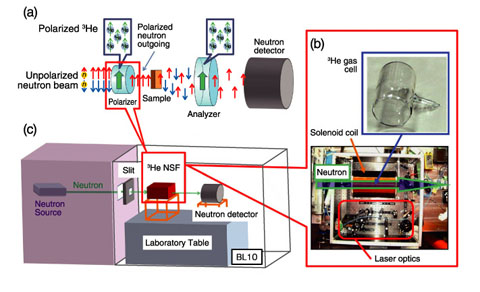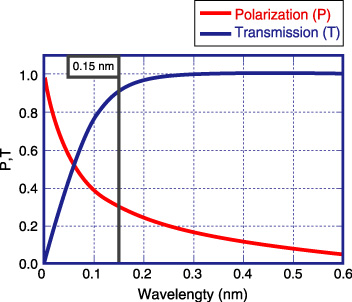
Fig.12-14 Principle of operation of the neutron spin filter and the experimental setup

Fig.12-15 Performance of the in situ SEOP NSF as a neutron polarizer
Polarized neutron scattering techniques are important and powerful tools in the study of magnetic materials. For several decades, Heusler alloy crystals and magnetic supermirror devices have been widely used to polarize neutron beams. However, such devices cannot effectively manage the pulsed neutron beam of at J-PARC as the beam has a relatively broad energy spectrum.
One of the design requirements for a neutron polarizing device is that the device should be as small as possible so that the contribution to the experimental background, which is derived from shielding, is minimized.
Polarized 3He gas functions as a neutron spin filter (NSF) (Fig.12-14(a)), and in recent years, 3He NSFs have been extensively developed around the world. We have designed a compact, in-situ spin-exchange optical pumping (SEOP) polarized 3He NSF system and employed it as a polarizer for incident beams at the J-PARC (Fig.12-14(b)). In this system, 3He gas and small Rb droplets are sealed in a glass cell. The cell is heated to 180 °C to vaporize the Rb droplets while applying an external magnetic field. The Rb vapor is optically pumped using a circularly polarized laser beam, and the electric-spin-polarized Rb in turn polarizes 3He via hyperfine interaction. The SEOP NSF system was realized through improvements to laser optics in the NSF system.
The performance of the present NSF system was measured at BL10 of the MLF/J-PARC. A schematic of the experimental setup is shown in Fig.12-14(c). Neutron transmission measurements indicated that the 3He polarization reached as high as 73%. The calculated performance of the NSF as a neutron polarizer is shown in Fig.12-15. The system worked satisfactorily across a wide range of wavelengths with acceptable performance being demonstrated using 0.15 nm neutrons for which, with 30% transmission, 90% polarization was achieved.
Pulsed neutron beams have been successfully polarized at J-PARC using the compact, in-situ SEOP NSF system. The present NSF system may find application in the study of strongly correlated electron systems and the wide variety of physical phenomena in which they are manifested, such as ferromagnetism and superconductivity.